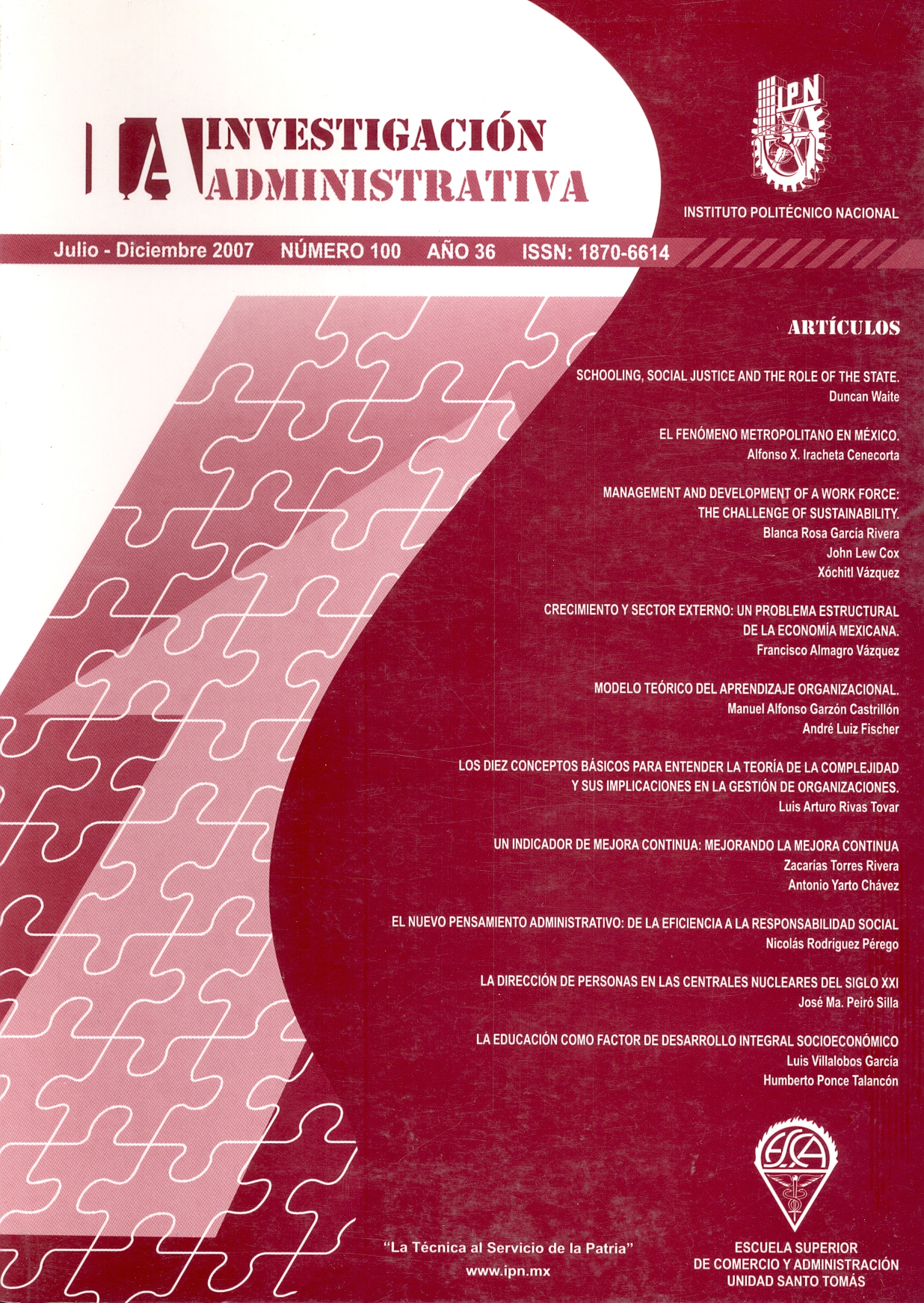AN INDICATOR OF CONTINUOUS IMPROVEMENT IMPROVING CONTINUOUS IMPROVEMENT
Main Article Content
Abstract
The present work describes several approaches of continuous improvement. This study proposes an implementation model of continuous improvement and the establishment of a key performance indicator for continuous improvement for all organizations through the TOYA índex.
Article Details

This work is licensed under a Creative Commons Attribution-NonCommercial 4.0 International License.
References
Conney, R. (2002). Is “lean” a universal production system?. Batch production in the automotive industry. Department of Management, Monash University, Caulfield East, Australia. International Journal or Operations & Production Management, Vol. 22 No. 10, pp. 1130 -1147.
David W. Buker, Inc. & Associates. (1990). Just- in-Time Manufacturing. Videoplus. Manufacturing Excellence Series.
Dentón, D. K. (1993). Dirección Horizontal. Más allá de la satisfacción total del cliente. Primera Edición en Español. México. Panorama Editorial.
Domínguez, M. y Yarto, M. (2007). Seminario: Metodología de Aplicación de los Conceptos Corrugator. Mejoremos IDK efectuando IIP. Con la Adaptación de Conceptos de Lean Manufacturing. IACOR. México.
Fohri, I. (2000). De Ordinario a Extraordinario. Curso Empresarial de Mejora Continua. Primera Reimpresión. México. Panorama Editorial.
Forza, C. (1996). Work organization in lean production and traditional plants. What are the differences?. University of Padova, Vicenza, Italy. Internacional Journal of Operations & Production Management, Vol. 16 No.2, pp 42 - 62.
Goldratt, E. y Cox, J. (1996). La Meta. Un Proceso de Mejora Continua. Segunda Edición en Español. México.Ediciones Castillo.
Goldratt, E. (1990). The Haystack Síndrome. Sifting Information Out of the Data Ocean. New York. North River Press, Inc.
Goldratt, E. (1990). What is this thing called Theory of Constraints and how should be implemented?. Massachusetts. North River Press, Inc.
Hammer, M. y Champy, J. (1994). Reingeniería. Tercera Reimpresión. Colombia. Grupo Editorial Norma.
Harrington, J. H. (1991). Business Process Improvement.. U.S.A. Ameñcan Society for Quality Control.
Imai, M.. (1998). Kaizen. La Clave de la Ventaja Competitiva Japonesa. Décima Reimpresión. México. Compañía Editorial Continental, S.A. de C.V.
Karlsson, C. y Alstróm, P. (1996). Assessing changes towards lean production. Stockholm School of Economics, Sweden. International Journal of Operations & Production Management, Vol. 16 No. 2, pp. 24- 41.
Nava, V. y Jiménez, A. (2005). ISO 9000:2000 Estrategias para Implantar la Norma de Calidad para la Mejora Continua. México. Limusa Noriega Editores.
Rivas, L. (2002). Gestión Integral de Recursos Humanos. Segunda Edición. México. Ediciones Taller Abierto.
Sertvije, R. (2003). Bimbo Estrategia de Éxito Empresarial. Primera Edición. México. Pearson Educación.
Sheridan, J.H. (1997). Kaizen Blitz. Industry Week, September 1; 246, 16; ABI/INFORM Global pg.18.
Sohal, A. y Egglestone, A. (1994). Lean Production: Experience among Australian Organizations. Australia. International Journal of
Operations & Production Management, Vol. 14
No. 11, pp. 35-51.
Talley, D. (1991). Total Quality Management. Performance Cosí Measures: The Strategy for Economic Survival. Winsconsin. ASQC Quality Press.

